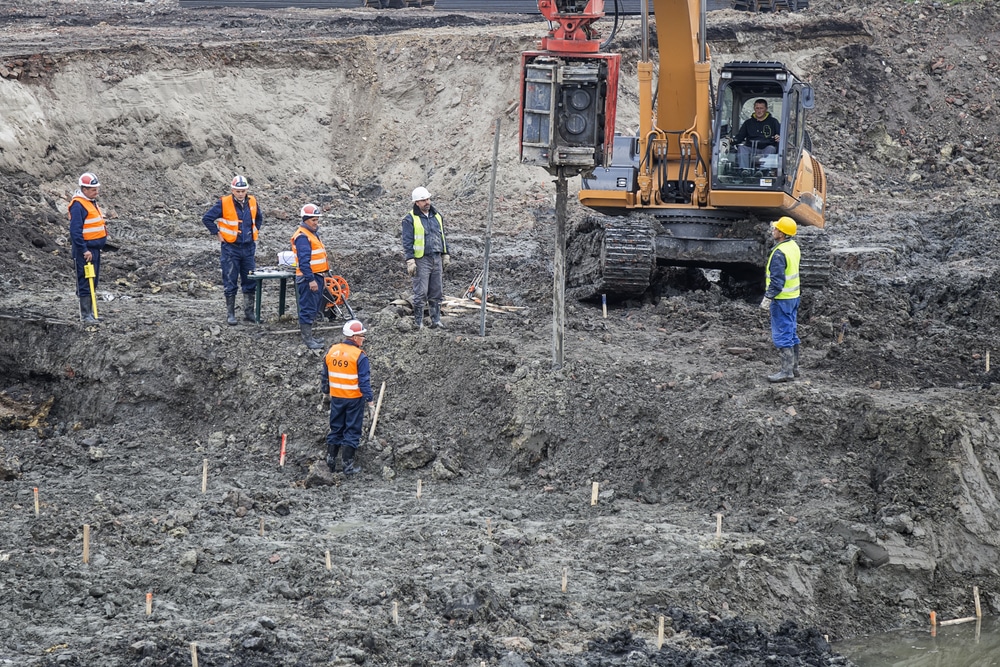Geo Tech Engineer: Enhancing Site Examinations with Advanced Geotechnical Techniques
Wiki Article
The Importance of Dirt Evaluation and Website Examination in the Geotechnical Market: Ensuring Security and Stability in Civil Engineering
In the geotechnical market, soil analysis and website examination are fundamental elements that underpin the safety and security of civil engineering projects. These processes not just disclose the qualities of subsurface products yet also notify critical decisions relating to layout and construction methods. By extensively understanding dirt homes, designers can preemptively address possible challenges, ultimately protecting structural integrity. The ramifications of these examinations extend beyond immediate project success; they can affect long-term sustainability and durability. As we discover the intricacies of these techniques, it becomes evident that their relevance can not be overemphasized.Recognizing Dirt Features
In the realm of geotechnical engineering, an extensive understanding of soil residential or commercial properties is critical for educated decision-making and reliable task layout. The characterization of dirt includes the assessment of numerous physical and mechanical properties, such as grain size circulation, plasticity, permeability, cohesion, and shear toughness. These buildings dictate just how soil acts under various loading conditions and environmental influences, making them vital for examining website suitability for building and construction jobs.Soil category systems, such as the Unified Soil Category System (USCS) and the AASHTO classification, supply frameworks for organizing soils based upon their features. This category help engineers in predicting actions under anxiety, water flow, and settlement, thereby affecting layout choices and building and construction techniques.
In addition, the interaction in between dirt and surrounding structures is a key consideration in geotechnical design. Recognizing dirt residential properties aids determine potential difficulties, such as liquefaction in earthquake-prone areas or excessive settlement in soft soils. By completely examining these properties, geotechnical designers can make certain the safety and security, security, and long life of structures, ultimately contributing to the overall durability of civil engineering projects.
Methods of Dirt Analysis

In-situ examinations include techniques such as Conventional Infiltration Examinations (SPT), Cone Infiltration Tests (CPT), and vane shear tests. SPT reviews the resistance of soil to infiltration, providing data on thickness and stamina, while CPT gauges dirt resistance and pore stress, producing constant accounts of dirt stratigraphy. Vane shear tests are especially beneficial for evaluating the shear stamina of natural dirts.
Laboratory tests match these in-situ analyses and involve sampling dirt for controlled testing. Common laboratory techniques include Atterberg limits, which identify the plasticity qualities of fine-grained soils, and compaction tests, which analyze moisture-density connections. Additional examinations, such as triaxial compression and unconfined compression examinations, are conducted to assess the shear strength of dirt examples under various problems.
Duty of Website Examination
Site investigation plays a crucial role in the geotechnical engineering procedure, working as the foundation for recognizing subsurface problems. This detailed assessment includes organized expedition of dirt and rock properties, groundwater levels, and other geological functions that influence task safety and security and security.Generally, site examinations encompass a range of strategies, consisting of exploration boreholes, tasting, and in-situ testing. These approaches provide engineer of record crucial data on the mechanical and physical attributes of the ground, notifying engineers concerning potential obstacles such as soil negotiation, birthing capability, and incline stability.
Moreover, site examination promotes the identification of hazardous products and pollutants, allowing the implementation of suitable removal actions. By developing a precise subsurface account, website examinations assist to reduce risks related to building and construction, making sure that tasks comply with safety and security criteria and regulations.
The findings from a detailed website investigation not only guide design decisions but likewise affect building and construction methods and timelines. In recap, the importance of site investigation can not be overstated; it is an important action in the geotechnical engineering procedure, preparing for effective task execution while focusing on public safety and environmental integrity.
Effect On Task Style
A thorough understanding of dirt qualities substantially affects task layout in the geotechnical industry. Dirt evaluation educates designers about the mechanical residential or commercial properties, structure, and habits of the ground, which are crucial factors in determining the expediency and security of a construction job. Exact data on soil compressibility, stamina, and leaks in the structure enable the advancement of reliable structure styles, making certain that structures are effectively sustained and secure throughout their life-span.Moreover, the existence of impurities or unstable soil layers can motivate alterations in project style, such as selecting different construction approaches or materials. This aggressive method minimizes risks associated with dirt negotiation, extreme loading, or lateral movement, thus safeguarding both the honesty of the framework and public safety and security.
The integration of dirt analysis into task layout additionally assists in compliance with regulatory demands and ecological considerations. By resolving soil-related obstacles early in the layout process, designers can optimize resource allowance and lower potential delays and expenses linked with unforeseen site conditions. Eventually, comprehensive soil analysis boosts the overall high quality and longevity of civil design tasks, leading to more resistant and lasting framework.
Study and Instances
Showing the critical role of soil analysis in the geotechnical market, different instance research studies highlight its influence on job end results. One noteworthy instance is the construction of a skyscraper in midtown Los Angeles, where considerable dirt screening disclosed unstable subsurface conditions. geotechnical engineers. By identifying the existence of large clay, designers had the ability to redesign the foundation, integrating deep pilings that made certain stability and security, inevitably preventing possible architectural failures
Last but not least, a dam project in the Southeast encountered hold-ups due to unexpected dirt disintegration concerns. In-depth dirt analysis allowed engineers to execute efficient stabilization techniques, making sure that the dam satisfied security policies while adhering to the job timeline. These situations emphasize the need of thorough soil analysis and website examination, highlighting their important duty in attaining secure and effective civil engineering projects.
Verdict
In verdict, dirt analysis and site investigation are basic parts of the geotechnical industry, playing a vital duty in making sure the security and stability of civil engineering projects. By offering vital information on soil homes and subsurface conditions, these procedures notify foundation style and construction approaches. In addition, detailed examinations add to risk recognition and danger mitigation, ultimately enhancing the long life and toughness of frameworks while optimizing resource allotment throughout the task lifecycle.In the geotechnical industry, soil analysis and website examination are foundational elements that underpin the security and security of civil engineering jobs. Recognizing soil homes aids determine potential difficulties, such as liquefaction in earthquake-prone areas or extreme settlement in soft dirts. SPT evaluates the resistance of dirt to infiltration, offering data on density and stamina, while CPT gauges dirt resistance and pore stress, producing continual profiles of soil stratigraphy. These cases highlight the necessity of detailed dirt evaluation and website examination, highlighting their important function in accomplishing secure and effective civil engineering jobs.
In verdict, dirt analysis and site investigation are essential parts of the geotechnical industry, playing a vital function in making certain the safety and stability of civil engineering projects.
Report this wiki page